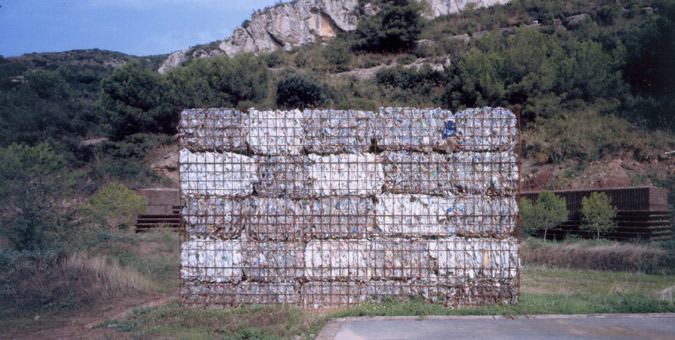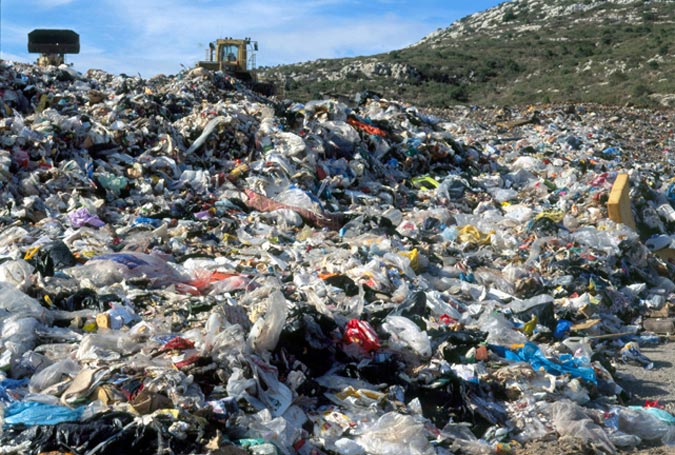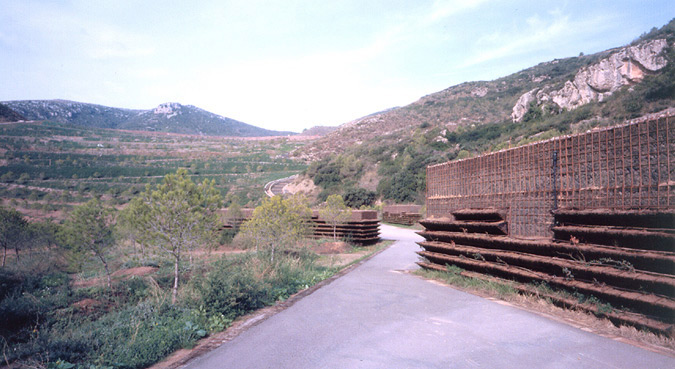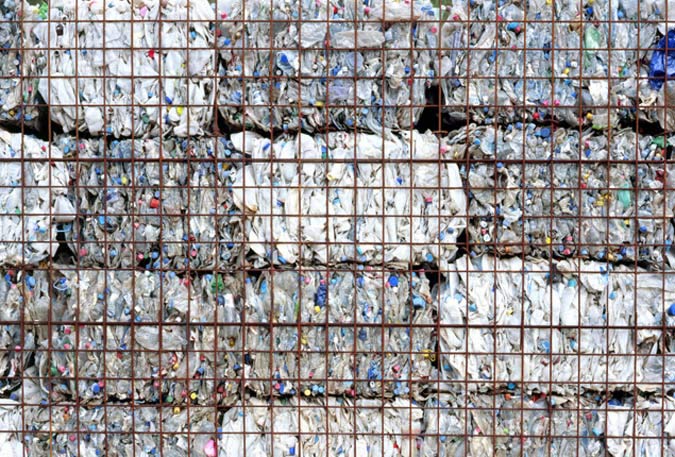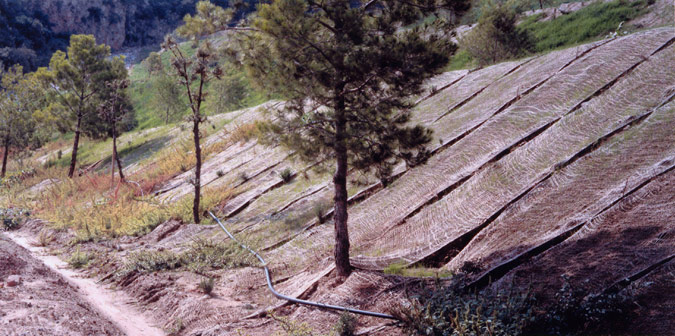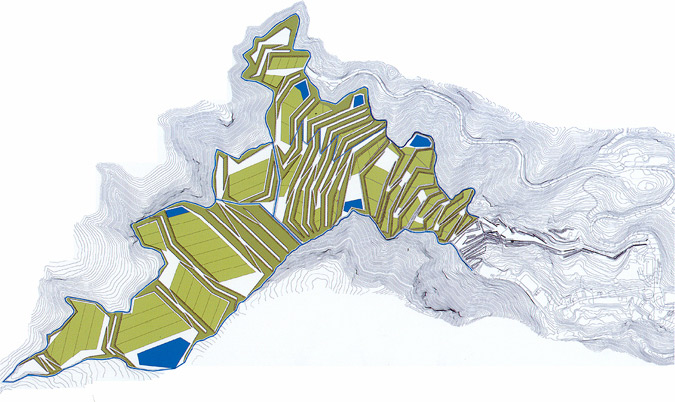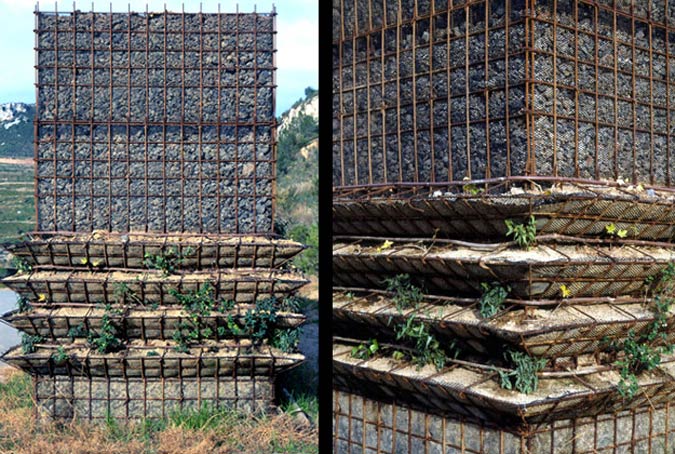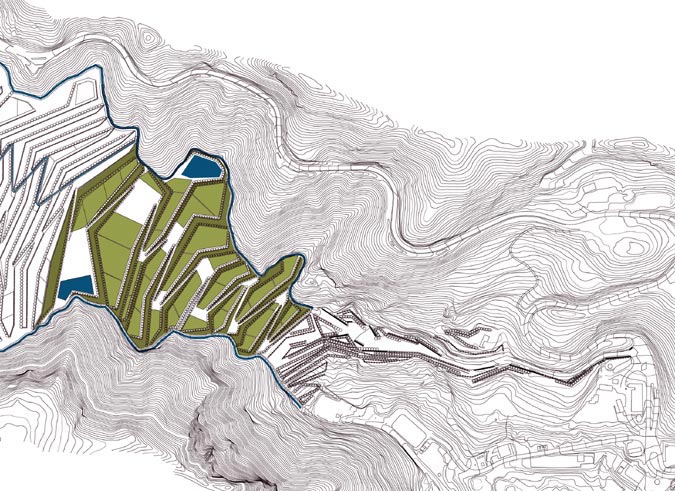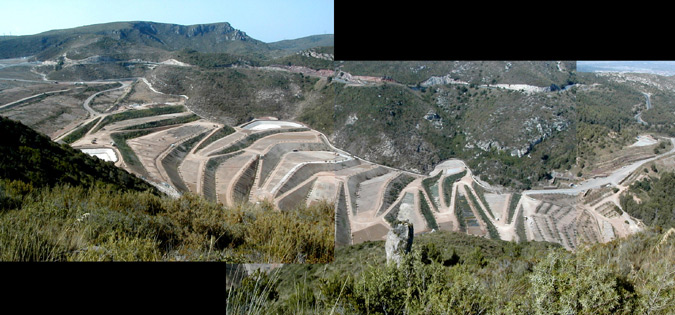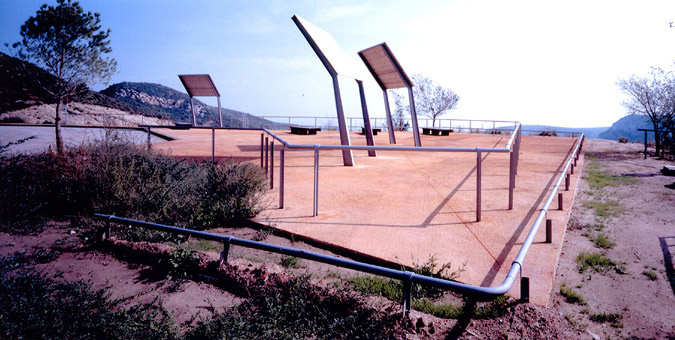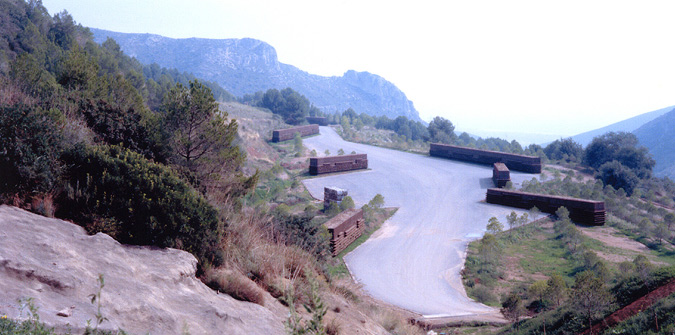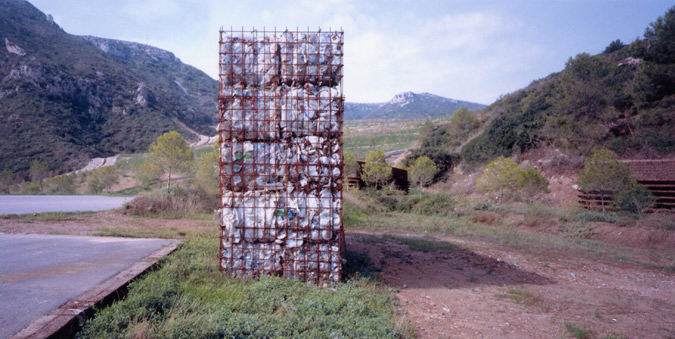Previous state
Vall d'en Joan was a deep hollow in the Garraf Massif, between the towns of Begues and Gavà, which was chosen in 1974 as the site for the urban waste tip for the whole Barcelona metropolitan area. The rubbish tipped there over a period of more than thirty years eventually filled a large natural concavity with a surface area of 60 hectares and 80 metres deep. This process worked a deep transformation of the place, which was characterised by a new artificial topography formed by terraces, slopes and ziz-zag ramps for the lorries that brought the rubbish. Given the porosity of the limestone terrain, the leaching caused by the exploitation had filtered so much that it contaminated the Castelldefels aquifer. Moreover, it is estimated that the contribution to the greenhouse effect of the methane given off by the huge mass of rubbish in the tip represented approximately 20% of the total greenhouse gases emitted by the whole city of Barcelona, being exceeded only by the contribution of the fuel gases generated by traffic.
Aim of the intervention
In 1999 an ambitious project was launched, financed jointly by Barcelona city council, Barcelona provincial council, the community of towns and cities, the waste board and the European Union. Its aim was to fill in the rubbish tip and restore the landscape in order to integrate it into the Garraf Nature Reserve. The landfill process was structured in different stages and included a period of natural regeneration and recovery of the conditions of salubrity for it to be opened as a public park in 2010. While awaiting that date, the precinct has played an important educational role through guided visits to the recovered zone and the rest of the tip, which continued to function until 2006.
Description
The first phase of this enormous work concentrated on a zone with a surface area of 20 hectares. The terraces, slopes and ramps that shaped the topography of the exploitation were respected and consolidated with inert material fillings, the product of the recycling of urban waste. The rubbish was sealed with a waterproofing sheet, a layer of draining gravel one metre thick and a geotextile filter with a last layer of soil. On that layer resistant local species of vegetation which require little water were planted. On the terraces agricultural crops of local legumes were planted; their absorption capacity made it easier to regenerate the soil. On the slopes species of trees were planted like pine and evergreen oak and shrubs such as brambles, brush or scrub. The entrance to the park from Gavà was also redone and a series of gabion walls filled with recycled waste or soil bear witness to the former use of the site.
In addition to the surface regeneration of the tip, the intervention includes two actions, less showy but no less important, aimed at the management of the liquids and gases produced by the immense mass of waste. First, the surface water collection network was separated from the internal water collection network, which prevents rainwater from coming into contact with the waste and increasing the flow of dirty liquids it secretes. And so a series of perimeter channels and ditches collect and channel the surface rainwater and feed a network of irrigation ditches that help with the process of reforestation of the park. Moreover, a system of internal channels intercepts any half clean rainwater that might have penetrated and takes it to large underground storage pools. The leaching or dirty liquids produced inside the mass of rubbish are collected before they filter into the ground and purified at a treatment plant before being emptied into the sea.
Moreover, a catchment and collection system for the biogas produced by the fermentation of the waste has been installed. There are more than 150 wells distributed around the whole area of the tip. The gas is aspirated through three compressors and piped to a generating plant where twelve motors use it as fuel, generating an average electric power of 12,500 Kw/h, which is exported to the general power network.
Assessment
It is not easy to see this landscaping project as an urban public space since it was closed to the public for a long time and is set in the wild natural context of the Garraf Massif. Nevertheless, the reason for being of this great infrastructure is inseparable from the urban reality of the metropolitan area which originated it and which it served for over thirty years. Moreover, setting aside the intention for the space to become a public park once the toxicity rates permitted, its educational and environmental contributions makes its qualities as a public service unquestionable. And should there be any lingering doubt, we may highlight its contribution to the power supply. It is estimated that within a period of 10 years, 550 million cubic metres of methane from the tip biogas will have been used to produce energy. That will make it possible to generate 1100 million kWh, enough to meet the power demands of a town of 12,000 inhabitants, and which will avoid the emission into the atmosphere of between 50,000 and 110,000 tons of carbon dioxide from power stations fired by fossil fuels.
David Bravo Bordas, architect
[Last update: 13/05/2021]


